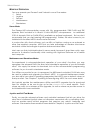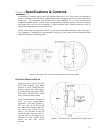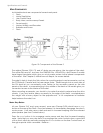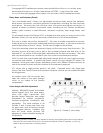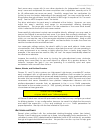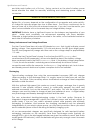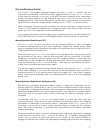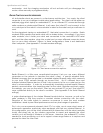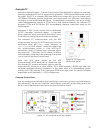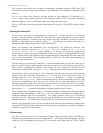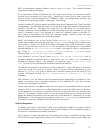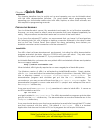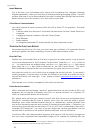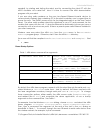
Specifications and Controls
mechanism. And the charging mechanism will not activate until you disengage the
motors, either manually or programmatically.
RADIO CONTROLS AND ACCESSORIES
All ActivMedia robots are servers in a client-server architecture. You supply the client
computer to run your intelligent mobile-robot applications. The client can be either an
onboard piggy-back laptop or embedded PC, or an offboard PC connected through
radio modems or wireless serial Ethernet. In all cases, that client PC must connect to the
HOST serial port of the robot’s microcontroller in order for the robot and your software to
work.
For the piggyback laptop or embedded PC, that serial connection is a cable. Radio
modems simply replace that serial cable with a wireless tether. Accordingly, if you have
radio modems, one is inside your robot and connected to the controller’s HOST serial
port, and the other modem plugs into a serial port on some offboard computer where
you run your client software. Hence, in these configurations, there is one dedicated
client computer. (See Appendix C for radio modem settings.)
Figure 13. Client-server connection options.
Radio Ethernet is a little more complicated because it lets you use many different
computers on the network to become the robot’s client. A special onboard Serial-
Ethernet accessory that we provide is a standard wireless Ethernet radio which connects
to your local TCP/IP network through an Access Point. But it’s different from most
standard wireless Ethernet devices in that it also connects to the HOST serial port on the
robot’s microcontroller. It works by automatically translating network-based Ethernet
packet communications into streaming serial for the robot controller and back again.
Accordingly, you may run the robot’s client on any network PC just as if that client PC
were connected directly to the robot’s controller. (See Appendix D for Serial Ethernet
settings.)
A major disadvantage of the wireless Ethernet-to-serial device, however, as well as for
radio modems, is that they require a constant wireless connection with the robot.
Disruption of the radio signal—a common occurrence in even the most modern
installations—leads to poor robot performance and very short ranges of operation.
This is why we recommend onboard client PCs for wider, much more robust areas of
autonomous operation, particularly when equipped with their own wireless Ethernet. In
this configuration, you run the client software and its interactions with the robot controller
locally and simply rely on the wireless connection to export and operate the client
controls, such as through X-Windows or VNCserver. Moreover, the onboard PC is often
needed for local processing, such as to support a laser range finder or to capture and
process live video for vision work.
18



